 Biblio
Biblio
Using the blockchain technology to store the privatedocuments of individuals will help make data more reliable and secure, preventing the loss of data and unauthorized access. The Consensus algorithm along with the hash algorithms maintains the integrity of data simultaneously providing authentication and authorization. The paper incorporates the block chain and the Identity Based Encryption management concept. The Identity based Management system allows the encryption of the user's data as well as their identity and thus preventing them from Identity theft and fraud. These two technologies combined will result in a more secure way of storing the data and protecting the privacy of the user.
Internet of Things (IoT) systems are becoming widely used, which makes them to be a high-value target for both hackers and crackers. From gaining access to sensitive information to using them as bots for complex attacks, the variety of advantages after exploiting different security vulnerabilities makes the security of IoT devices to be one of the most challenging desideratum for cyber security experts. In this paper, we will propose a new IoT system, designed to ensure five data principles: confidentiality, integrity, availability, authentication and authorization. The innovative aspects are both the usage of a web-based communication and a custom dynamic data request structure.
Document integrity and origin for E2E S2S in IoTcloud have recently received considerable attention because of their importance in the real-world fields. Maintaining integrity could protect decisions made based on these message/image documents. Authentication and integrity solutions have been conducted to recognise or protect any modification in the exchange of documents between E2E S2S (smart-to-smart). However, none of the proposed schemes appear to be sufficiently designed as a secure scheme to prevent known attacks or applicable to smart devices. We propose a robust scheme that aims to protect the integrity of documents for each users session by integrating HMAC-SHA-256, handwritten feature extraction using a local binary pattern, one-time random pixel sequence based on RC4 to randomly hide authentication codes using LSB. The proposed scheme can provide users with one-time bio-key, robust message anonymity and a disappearing authentication code that does not draw the attention of eavesdroppers. Thus, the scheme improves the data integrity for a users messages/image documents, phase key agreement, bio-key management and a one-time message/image document code for each users session. The concept of stego-anonymity is also introduced to provide additional security to cover a hashed value. Finally, security analysis and experimental results demonstrate and prove the invulnerability and efficiency of the proposed scheme.
Cloud forensics investigates the crime committed over cloud infrastructures like SLA-violations and storage privacy. Cloud storage forensics is the process of recording the history of the creation and operations performed on a cloud data object and investing it. Secure data provenance in the Cloud is crucial for data accountability, forensics, and privacy. Towards this, we present a Cloud-based data provenance framework using Blockchain, which traces data record operations and generates provenance data. Initially, we design a dropbox like application using AWS S3 storage. The application creates a cloud storage application for the students and faculty of the university, thereby making the storage and sharing of work and resources efficient. Later, we design a data provenance mechanism for confidential files of users using Ethereum blockchain. We also evaluate the proposed system using performance parameters like query and transaction latency by varying the load and number of nodes of the blockchain network.
The paper presents a comprehensive model of cybersecurity threats for a system of autonomous and remotely controlled vehicles (AV) in the environment of a smart city. The main focus in the security context is given to the “integrity” property. That property is of higher importance for industrial control systems in comparison with other security properties (availability and confidentiality). The security graph, which is part of the model, is dynamic, and, in real cases, its analysis may require significant computing resources for AV systems with a large number of assets and connections. The simplified example of the security graph for the AV system is presented.
With the development of e-Science and data intensive scientific discovery, it needs to ensure scientific data available for the long-term, with the goal that the valuable scientific data should be discovered and re-used for downstream investigations, either alone, or in combination with newly generated data. As such, the preservation of scientific data enables that not only might experiment be reproducible and verifiable, but also new questions can be raised by other scientists to promote research and innovation. In this paper, we focus on the two main problems of digital preservation that are format migration and preservation metadata. Format migration includes both format verification and object transformation. The system architecture of format migration and preservation metadata is presented, mapping rules of object transformation are analyzed, data fixity and integrity and authenticity, digital signature and so on are discussed and an example is shown in detail.
The IEEE Std. 1687 (IJTAG) was designed to provide on-chip access to the various embedded instruments (e.g. built-in self test, sensors, etc.) in complex system-on-chip designs. IJTAG facilitates access to on-chip instruments from third party intellectual property providers with hidden test-data registers. Although access to on-chip instruments provides valuable data specifically for debug and diagnosis, it can potentially expose the design to untrusted sources and instruments that can sniff and possibly manipulate the data that is being shifted through the IJTAG network. This paper provides a comprehensive protection scheme against data sniffing and data integrity attacks by selectively isolating the data flowing through the IJTAG network. The proposed scheme is modeled as a graph coloring problem to optimize the number of isolation signals required to protect the design. It is shown that combining the proposed approach with other existing schemes can also bolster the security against unauthorized user access as well. The proposed countermeasure is shown to add minimal overhead in terms of area and power consumption.



